The great “ceremonial-grade” cacao debate.
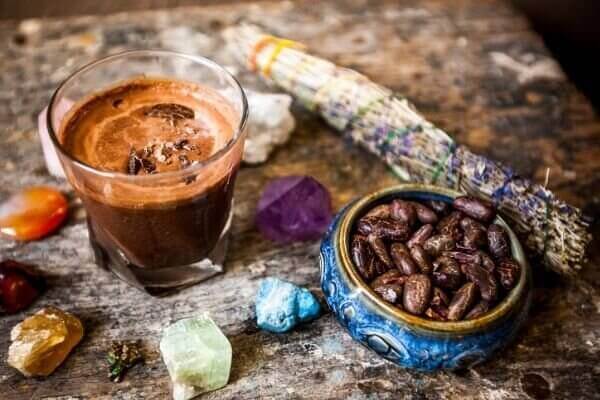
When I arrived back in Australia after three years living in Mexico and began my search for cacao, I had no idea that there was a ‘ceremonial’ cacao movement worldwide, nor did I realise there were debates surrounding its use. To me and my friends living in Mexico, it was simply ‘cacao’. We enjoyed it as a meditation-friendly coffee replacement, as a key ingredient in raw vegan treats, as a bonding experience during meetings, and as a heart-opening tool before special events. For us, the subtle magic of this plant medicine was a light, joyful and playful energy that infiltrated our days and brought us closer together.
We were yogis, not shamans: more interested in the power of the beauty and stillness of the Heart, found in moments of profound silence, than in the shamanic control and manipulation of the natural world - as is implied by the term “ceremonial cacao”.
Cacao is everywhere in Mexico. The beans can be found in local grocery stores, even in the tiny fisherman’s village on the Pacific coast where we lived. I loved going to Oaxaca City and visiting the colourful shops dedicated entirely to cacao, where you can buy kilos of cacao paste, sometimes ground up for you right there on the spot. In San Cristobal de las Casas, Chiapas, cacao ‘cafes’ are as plentiful as coffee shops. As my partner Alistair will attest, this is my idea of heaven.
When I learned about the controversies surrounding ’ceremonial’ cacao, my happy vision of sharing it with others back home in Australia was tainted by concerns of cultural appropriation. But the more I’ve delved into this, the more I uncover contradictions and historical misconceptions, which I’ve tried to outline on this page as best I can.
Basically, the deeper I dig with the keen eyes of a post-graduate history student drilled in the art of scrutinising unsubstantiated claims, the more my fears are allayed, and so I feel comfortable about my love affair with cacao and desire to share it it on my own unique way.
Whether you attend events that include cacao as an exploratory tool, or just drink it at home for a happy, healthy buzz, being equipped with a critical understanding of the history of cacao may come in handy - especially if you ever get caught up in a cultural appropriation discussion. And, even more importantly, confronting these issues invites careful reflection about the intention behind our choice to share and/or consume cacao. And this isn’t to say there is a ‘correct’ intention. It is just to suggest that it is always helpful to be aware of what it is that we are doing, and why. Perhaps then we’re more likely to act with authenticity and integrity.
Are we trying take on the ancient religious practices of an Indigenous minority on the other side of the world?! If this is really what we’re trying to do, we could ask ourselves… why would we do this?
Or… are we simply embracing an incredibly healthy food gifted to us by nature: for the taste, health benefits, and the way it makes us feel - supporting us on our own personal journey or path, whatever that might be?
Again, there’s no right or wrong answer here. It’s just an invitation to tap into what feels true for you. Earnestly.
There are two main points of contention regarding the use of cacao, which I will address in turn:
- The term "ceremonial-grade", and
- The recent rise in popularity of cacao ceremonies.
1. The “Ceremonial-Grade” Cacao Conundrum
FIRSTLY - WHAT IS CACAO?
Cacao (prounounced ka-kow) generally refers to the fruits and seeds (which we call beans) of the theobroma cacao tree, a small evergreen native to tropical America. The word cacao is derived from Olmec and the subsequent Mayan languages (kakaw); the chocolate-related term cacahuatl is Nahuatl (Aztec language), derived from Olmec/Mayan etymology. Theobroma comes from the Greek words ‘theos’, meaning '“god”, and ‘broma’, meaning “food” therefore theobroma cacao literally means the “food of the gods”.
In their raw state, cacao seeds are very bitter, and unsuitable for human consumption. Somehow, ancient civilisations discovered that the process of drying, fermenting and roasting the seeds mellows out the flavours. One theory holds that the Olmecs may have eaten the cacao fruit, spat out the seeds into the fire, and the rich smell of them roasting inspired them to think “maybe there’s something more we could do with this”.
In Aztec and Mayan legend, cacao was discovered by the gods in a mountain containing other delectable foods (like maize, a.k.a. corn - considered even more sacred than our beloved cacao). The god ‘Sovereign Plumed Serpent’ gave cacao to the Maya after humans were created from maize by the divine grandmother goddess Xmucane.
WHAT IS “CEREMONIAL-GRADE” CACAO?
So-called “ceremonial-grade” cacao generally refers to Meso-American beans that have been fermented, lightly roasted, and ground into a paste. “Ceremonial-grade” cacao, we are told, must be minimally processed, organically grown, and harvested in small-batches using traditional methods. Some sources suggest it needs to be grown and distributed with the sole intention of ceremonial use.
Others say it is essential that ceremonial-grade cacao has been personally blessed by a Mayan elder, or some form of Indigenous priestess. One modern-day American ‘cacao shaman’ insists on checking each and every bean before it is ground up into cacao paste, and personally blessing each block before it is sent across the world. Cacao with these additional spiritual ingredients (for lack of a better descriptor) carries a hefty price tag.
I keep stumbling upon more and more products describing themselves as ‘ceremonial-grade’ that hardly meet any of these criteria. I’ve found ‘ceremonial-grade’ cacao powder, I’ve seen the term describing cacao that has been mass-produced and exported in bulk, and with cacao grown far from its Meso-American origins - for example in Trinidad, Sri Lanka, and Tanzania. There is no central authority determining what does and does not constitute ceremonial-grade cacao. The rules appear to be being made up as we go along, largely by those who are already selling ‘ceremonial-grade’ cacao.
THE GREAT LINGUISTIC SCREW-UP: classifying cacao beans.
The type of bean also allegedly plays a role in determining whether cacao is worthy of the ‘ceremonial-grade’ label.
Generally, cacao is classified into three main categories: criolla, forestero and trinitario. We are told that criolla cacao is delicate, with an incredibly flavour profile, and that it constitutes less than 1% of all cacao harvested in the world. This is usually the variety described as ‘ceremonial-grade’, though trinitario is also often deemed appropriate for ‘ceremonial’ use, due to its very similar chemical composition.
Forastero is what 90% of the market is made of, and originated in South America. This is sometimes described as the ‘cheap and nasty stuff’ used in Africa by big manufacturers because it is disease resistant, so they say.
Trinitario is the happy medium - some of the hardiness of forastero with the rarity, and rich flavour profile of criolla. Trinitario beans are a natural hybrid that first occurred when forastero seeds were introduced to Trinidad after a hurricane all but destroyed their criolla trees, and the two species cross-pollinated. Our Mexican cacao is considered to be made from criolla beans, and our Australian, Karkar Island and Balinese cacao all consist of predominantly trinitario beans.
BUT. While it’s true that some tribes who work with cacao are very particular about the type of bean they use, there are other Indigenous groups in Central and South America who are happily using forastero cacao to accompany their rituals - by virtue of the fact its grown on their land. For them, the type of bean is of no real significance, cacao is cacao.
So how did we get so fussy about the species of bean in the West?!
Also, according to Steve Bergin, an environmentalist and renowned cacao expert from Conservation Cacao:
“classifying cacao as Criollo/Forastero/Trinitario was one of the great foundational linguistic screw-ups in the history of the New World”.
This is because:
a) ‘Criolla’ simply means ‘someone or something originally from some place’ whereas ‘forastero’ means ‘from somewhere else’. So, for example, criolla cacao for someone from Venezuela is forastero cacao for everyone from abroad.
b) There are more than ten major families of cacao, and this simplistic trifecta ignores the complex genetic diversity within the species. Steve Bergin explains that now that we are able to do DNA mapping of cacao, more and more varieties are being discovered that were previously erroneously lumped into these three broad categories.
c) The characteristics associated with criollo/forastero/trinatario beans are sometimes totally out of whack. Some ‘criolla’ cacao is hardy and more bitter than ‘trinitario’ beans, and some forastero cacao fails to be resistant to disease.
d) At present, the only cacao that even resembles the pure variety that the Mayans would have used, can be found as individual trees in the wild in Mexico, Guatemala and Belize. According to Conservation Cacao, none of this cacao is available for consumption. It is simply too rare and difficult to access, deep in the jungles of Latin America. Most of the ‘criolla’ beans we can find today are actually closer to trinitario.
e). Scholars have shown that the wild ancestors of Mexican cacao are genetically different from current criolla bean plantations, even in the same region, and also totally different to, for example, Peruvian wild cacao plants. So any claims made by companies selling pure, heirloom cacao may be (perhaps unknowingly) misleading.
2. Cacao ceremonies: a modern phenomenon?
So we’ve established that the use of the term ‘ceremonial-grade’ is pretty inconsistent. To say the least. We’ll now turn to the other half of the great debate: the use of cacao in ceremonies.
WHAT IS A CACAO CEREMONY?
These days, a ‘cacao ceremony’ is a broad concept referring to an activity involving cacao combined with intention-setting, personal-development, creative expression, and/or spiritual exploration. It can be formal or informal, performed alone or in group, in silence or with music, and at any time of day. They are becoming popular worldwide, especially in North America and Europe, and increasingly so down here in Oz.
WHAT’S THE ISSUE?
Those with no Indigenous Meso-American blood running through their veins risk scrutiny when they hold events featuring cacao. This is cultural appropriation, some say. But this is tricky territory, because unlike other plant medicines that have a long lineage of ceremonial-use, cacao ceremonies appear to be a new phenomenon: there are no references to the facilitation of cacao-centred spiritual journeys in any indigenous cultures throughout history. The notion of a shaman dedicated exclusively to cacao is a modern construct.
But let’s back track a little…
WHAT DO WE REALLY KNOW ABOUT THE HISTORY OF CACAO?
Cacao has certainly been a sacred part of Meso-American cultures for millennia. But its use was extensive, not exclusively for rituals. According to many historians and archaeologists, the production, acquisition, and circulation of cacao was grounded in social relations, and also, at least in Mayan civilisations, cacao became readily available to almost everyone. In many Mayan households, cacao was enjoyed with every meal, as a thick and frothy drink combined with chilli peppers and water.
Indigenous peoples of the New World passed on the knowledge of cacao through oral histories, stonework, pottery and the creation of codices (intricate documents) that extolled cacao and documented its use in everyday life and ritual. This archeological evidence demonstrates cacao was a staple in ritual feasts, and served as an offering during important ceremonies like funerals and marriages. [8]. The notorious Mexican ruler, Montezuma II, allegedly gave it to his warriors prior to battle, and drank cacao as an aphrodisiac before visiting any one of his many wives. In an account by Spaniard Diaz del Castillo in 1560:
“[From time to time the men of Montezuma's guard] brought him in cups of pure gold a drink made from the cocoa-plant, which they said he took before visiting his wives. We did not take much notice of this at the time, though I saw them bring in a good fifty large jugs of chocolate, all frothed up, of which he would drink a little. As soon as the great Montezuma had dined, all the guards and many more of his household servants ate in their turn. I think more than a thousand plates of food must have been brought in for them, and more than two thousand jugs of chocolate frothed up in the Mexican style”.
It was evidently also exchanged as a currency, like gold. López-Gómara described the marketplace at Tlatelolco and commented on the goods for sale:
“The most important of all [goods in the marketplace'], which is used for money, is one that resembles the almond, which they call cacahuatl, and we cacao”.
Cacao has also been utilised extensively for its medicinal properties. The ‘Florentine Codex’ suggested a remedy made out of cacao beans, maize and the herb tlacoxochitl (Calliandra anomala) to alleviate fever, shortness of breath and heart conditions, and manuscripts produced in Europe and New Spain from the 16th to early 20th century revealed more than 100 medicinal uses for cocoa and/or chocolate. Additional medical complaints treated with cacao have included anemia, poor appetite, mental fatigue, poor breast milk production, tuberculosis, fever, gout, kidney stones, reduced longevity and poor sexual appetite/low virility.
After the Spanish encountered cacao in Mexico, they introduced it to their court in 1544, and within a century the culinary and medicinal uses of cacao had spread to France, English and elsewhere in Western Europe. At first, the Church banned cacao because the euphoric effects were so evident. (Thankfully, they eased this restriction with time). Cacao plantations were subsequently established in the Caribbean and Philippine colonies.
The Mayan word cacao entered scientific nomenclature in 1753 after the Swedish naturalist Linnaeus published his taxonomic binomial system and coined the genus and species Theobroma cacao (food of the gods), a combination that blended Greek with Mayan etymology. And after the 1880s, cacao was well and truly established as the chocolate we know today, having been introduced as a commercial crop throughout West Africa.
ARE THERE ACTUALLY MAYAN CACAO CEREMONIES?
Cacao is still used as an offering during some Mayan rituals in Chiapas, where our Mexican cacao is from, and in Guatemala. These rituals don’t resemble our modern-day cacao ceremonies in the West. And again, there is no hard evidence to suggest cacao-centric ceremonies were ever held at any point throughout history. The one exception is the Mayan annual festival in honour their patron saint of cacao growers, Ek Chuah (an event which also included the sacrifice of a dog and other animals, decorated with paint made out of cacao).
OUR STANCE.
First, it is worth noting that like yoga, coffee and wine, globalisation has gifted us with cacao. Regardless of where we all stand on the great cacao debates, it is undeniable that pure cacao is a healthier and more ethical way to experience chocolate, and acts as a counter-movement to the controversial ‘Big Chocolate’ industry.
On the other hand, it is also undeniable that cacao has played an incredibly important role throughout the history of Meso-American ancient civilisations, so we do believe it is very important to treat it with respect, and perhaps even be open to the idea that it may have effects on us we don’t fully understand, even with the help of an increasing body of scientific research extolling the health benefits of cacao. That’s one of the reasons why we’ve got a clear set of standards that govern our decisions, based on honouring our cacao, as well as our own values, while providing the opportunity for you to exercise yours.
I steer clear of the term “ceremonial-grade”. We do (begrudgingly) use the phrase ‘ceremonial cacao’, to help distinguish our cacao from cacao powder or cacao nibs - given the term ‘cacao paste’ is not yet widely known. We tried launching our biz using ‘cacao paste’ as our main product descriptor, but it confused too many people, so we switched to ‘ceremonial cacao’. I hope one day we can ditch the term ‘ceremonial’ altogether.
I don’t attempt to replicate Mayan rituals, nor to call upon the gods of cacao. I believe that facilitation of rituals of this kind are best reserved for those who have undergone rigorous training and devoted their lives to shamanic forms of spirituality.
I don’t claim to hold the keys to unlock cacao’s mysterious healing or spiritual properties.
And I don’t wish to tell you how you should and shouldn’t drink cacao.
I simply love cacao. I love it for the taste, the health benefits, the reminder to slow down and savour, and for the delightful psychological effects. I love sharing it with my family, my friends and my yoga students. I love starting my day enjoying each sip and the wave of calm and tenderness that follows, preparing me perfectly for meditation. And I love the boost of endurance it gives me when I go for a run.
I have found some sustainable, ethical and award-winning varieties for all of us to enjoy, whether we’re interested in its ceremonial associations, or just want a happy, healthy, heart-opening lift. And I will very happily participate in cacao ceremonies as long as we are aware we’re not trying to recreate ancient Indigenous rituals, nor engaging in shamanic practices (unless of course the facilitator has undergone the extensive rigorous training required to dedicate one’s life to shamanism).
My ongoing investigation into the integrity of Soma Cacao’s business model has been a challenging process, with no real reference point. But through careful reflection, I keep coming back to the same conclusion. I am confident sharing our cacao as long as:
- my intention is to help others feel happier, healthier, and calmer through cacao;
- I don’t make grand claims regarding cacao and spirituality;
- I make decisions based on ethical and sustainable principles; and
- I share cacao’s rich history with the discernment and scrutiny I’ve gained as a postgraduate history student.
“All has been consecrated.
The creatures in the forest know this,
The earth does, the seas do, the clouds know
as does the heart full of love.
Strange a priest would rob us of this knowledge
and then empower himself with the ability
to make holy
what already was.”
- St Catherine of Sienna.
11 comments
-
📗 + 1.914435 BTC.GET - https://graph.org/Payout-from-Blockchaincom-06-26?hs=0fc038710c92a8aacf957756c244f07e& 📗 on
qvu4lg
-
Louise on
Thank you, thank-you! So balanced and informative .. answered all my questions. x
-
Genevieve on
Thank you for this. The quote you finished the article with is truly beautiful. It gave me tears! And I love your cacao. Well done on an intellectually and spiritually inspiring business.
-
Ron Lentjes on
Great Article. I just discovered cacao paste at ridiculous high price tag. Being using cacao nibs as no more good chocolate out there any more (Baker’s Chocolate – 100% cacao mass / butter no longer available after bought out by big industry and change to terrible chemicals and quality and taste and health). So now looking for raw ingredients – cacao paste is that awesome taste that I remembered!
True spirituality has nothing to do with the use of food substances. Just sit in the forest and let go. It just happens all day long with no trading at all. Enjoy cacao with creation!
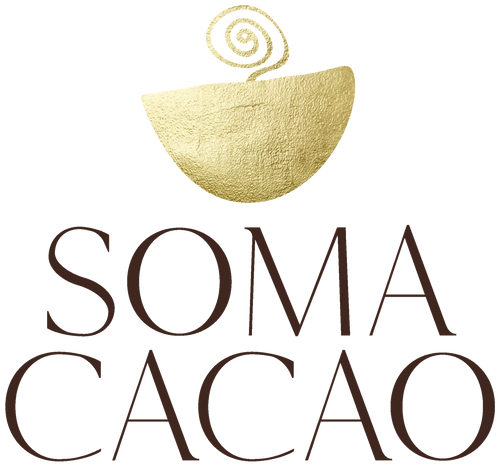
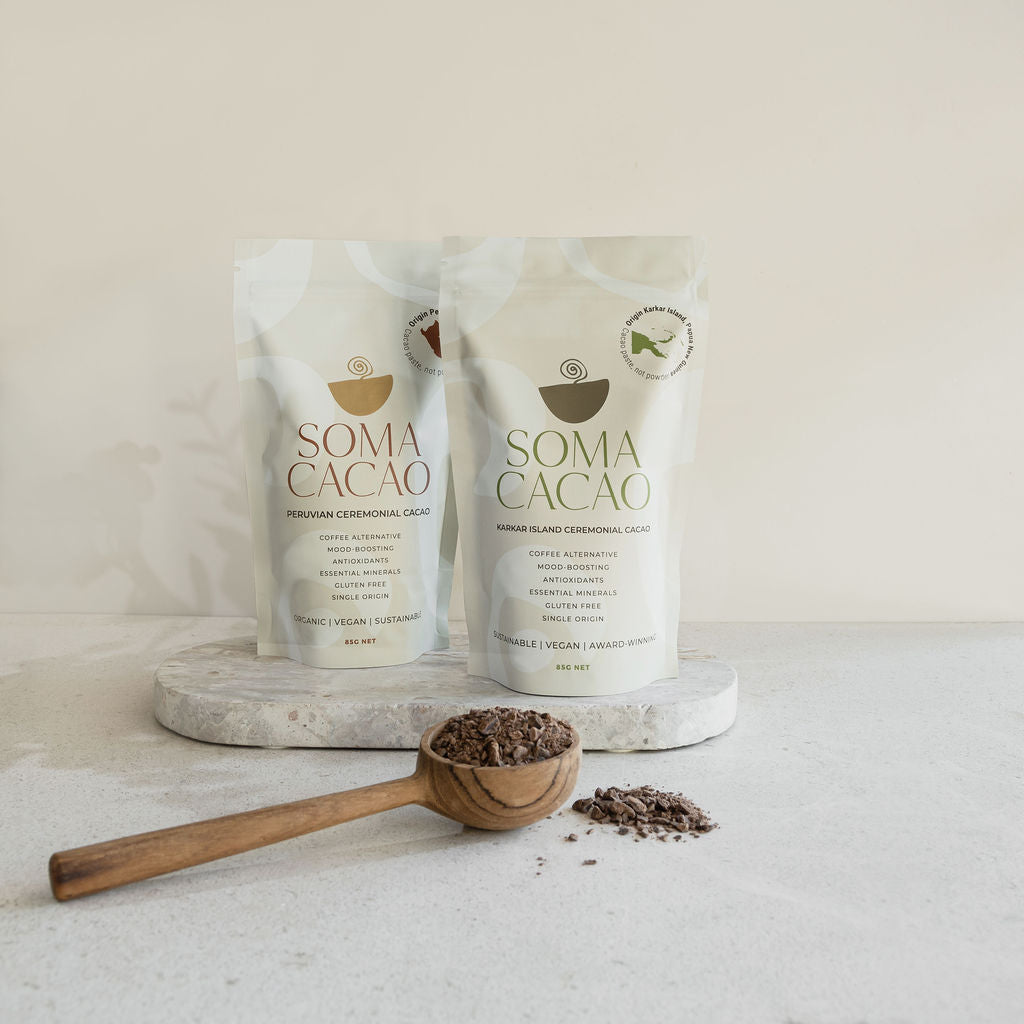
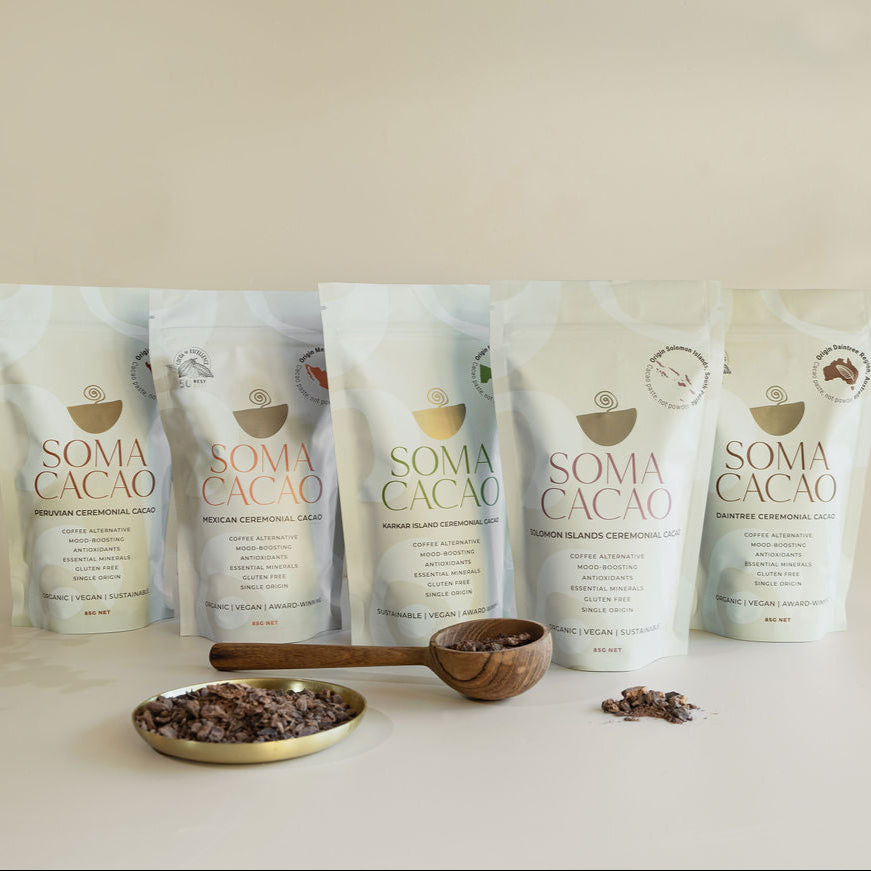
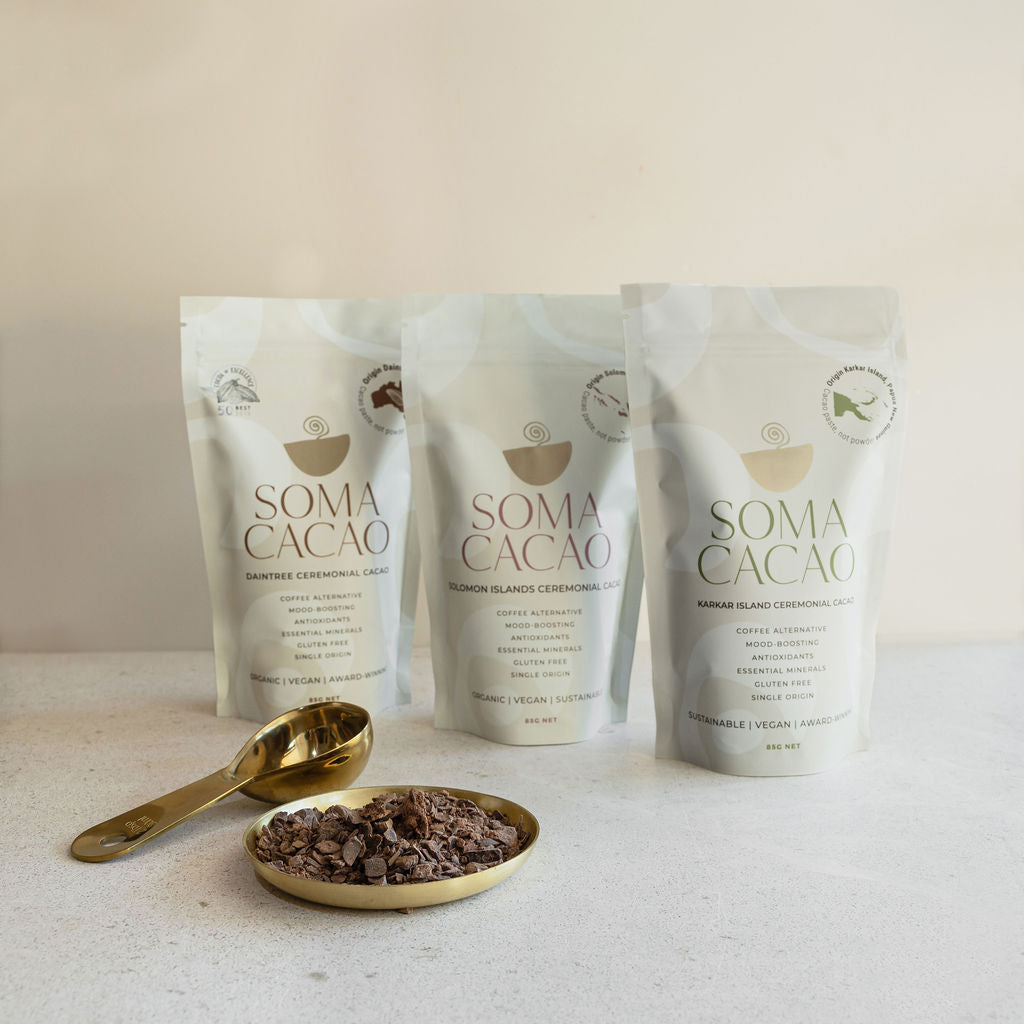
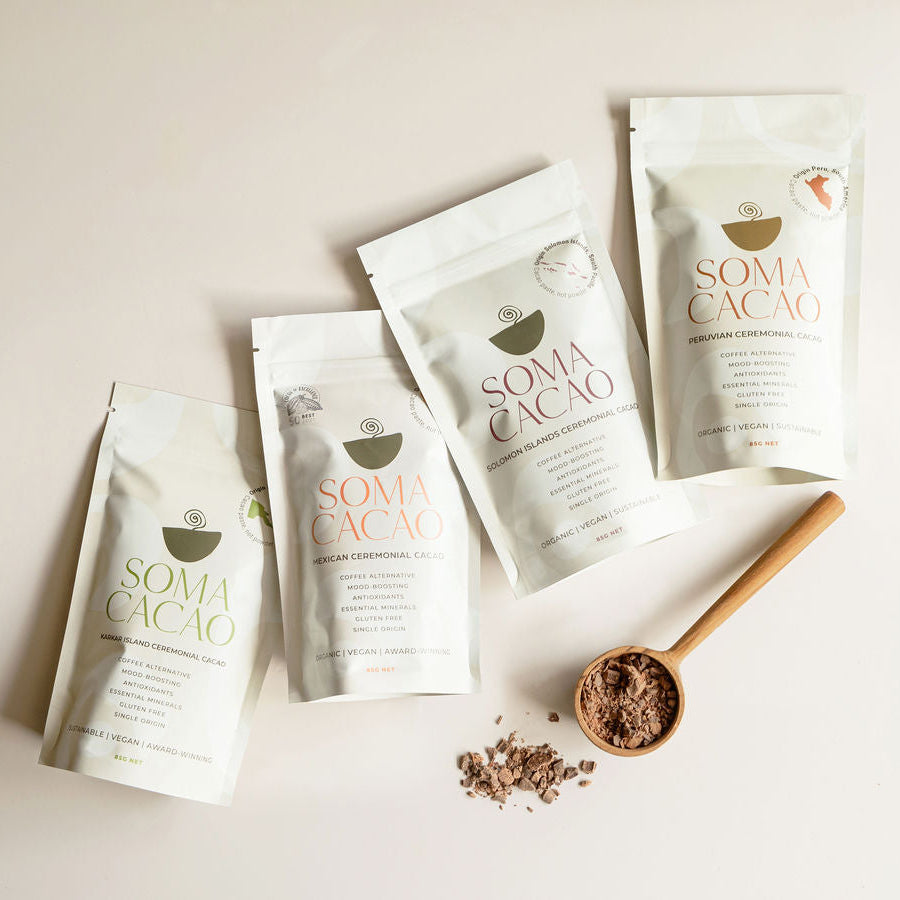
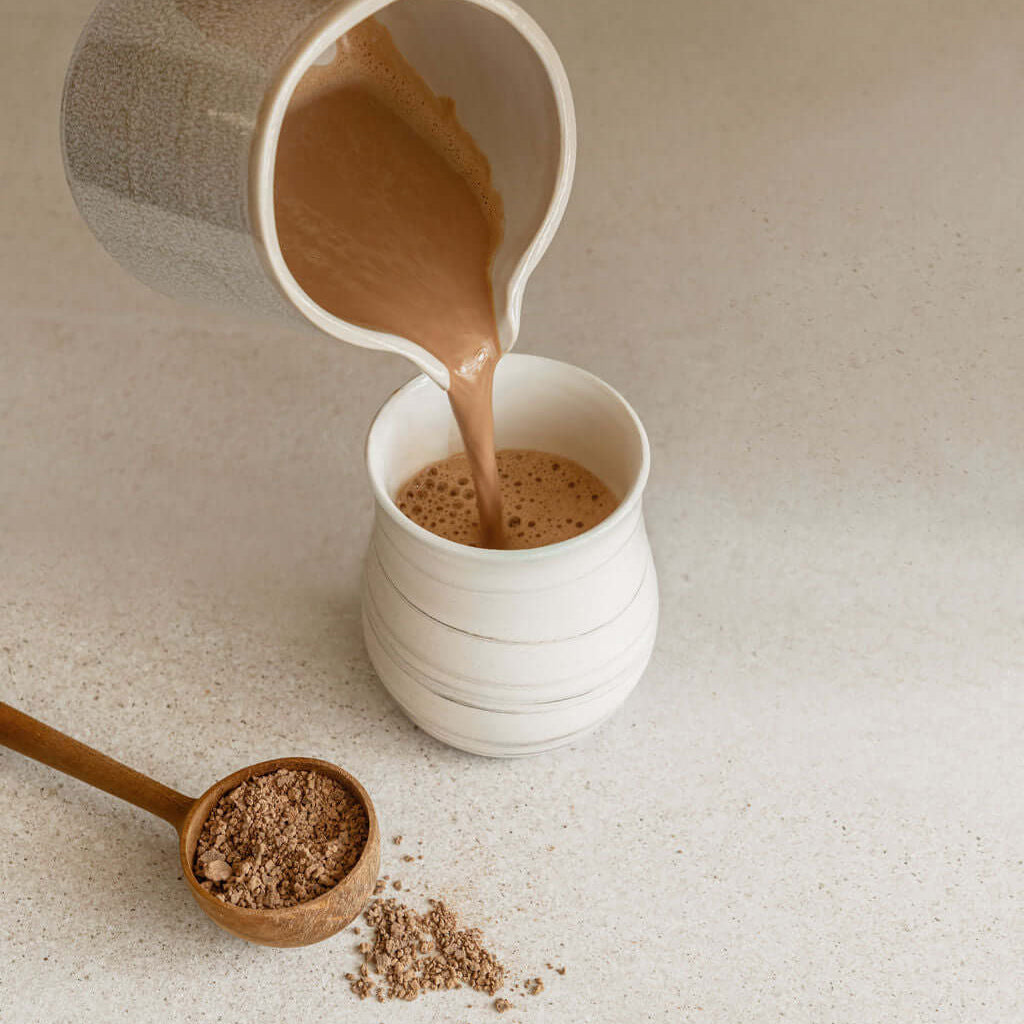
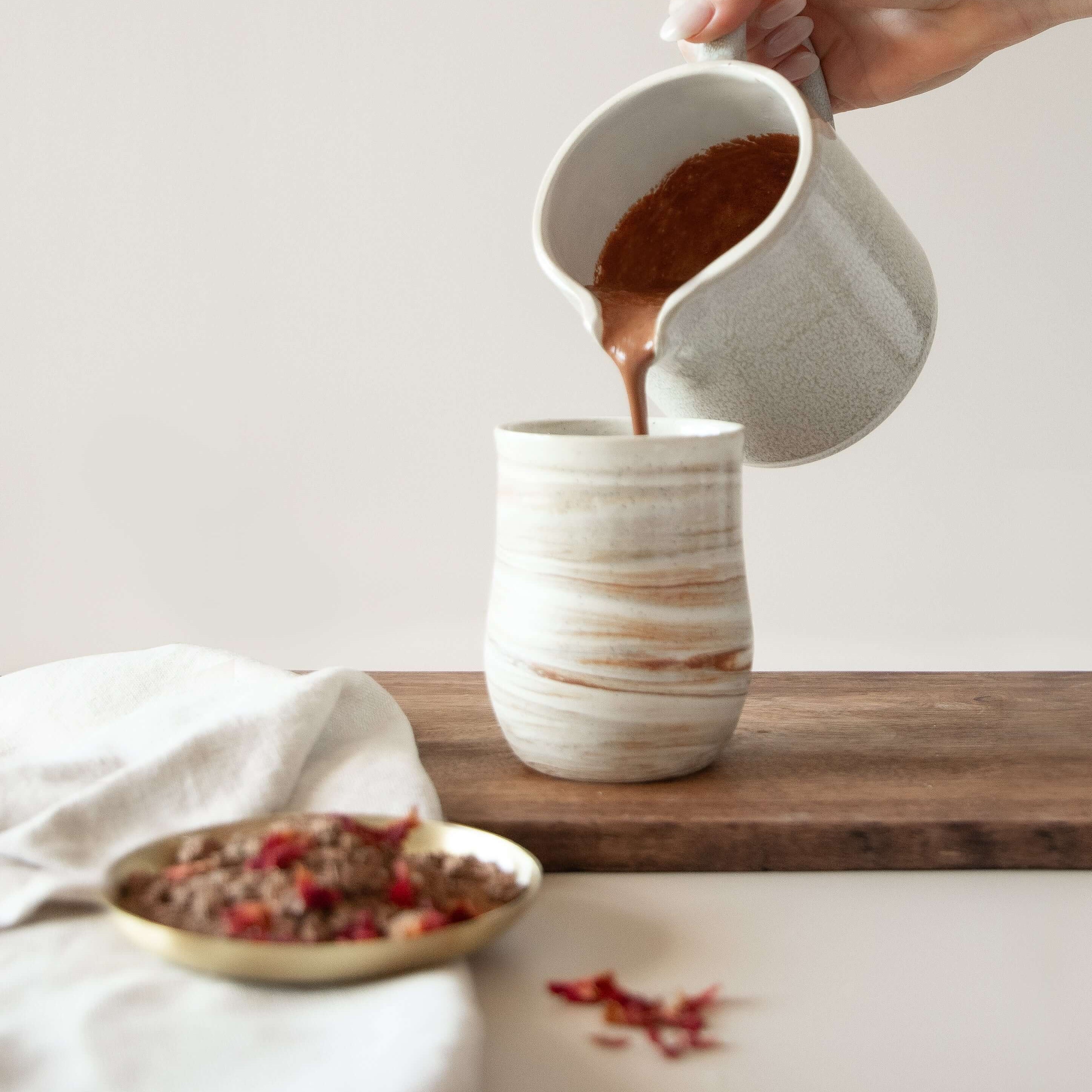
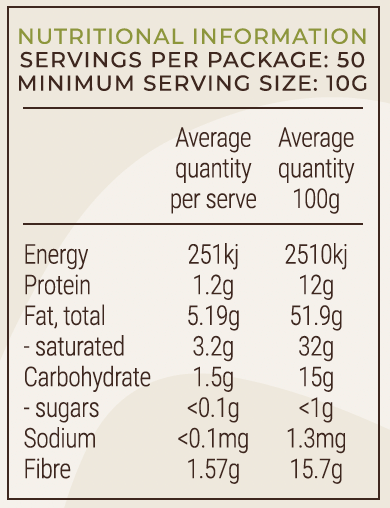
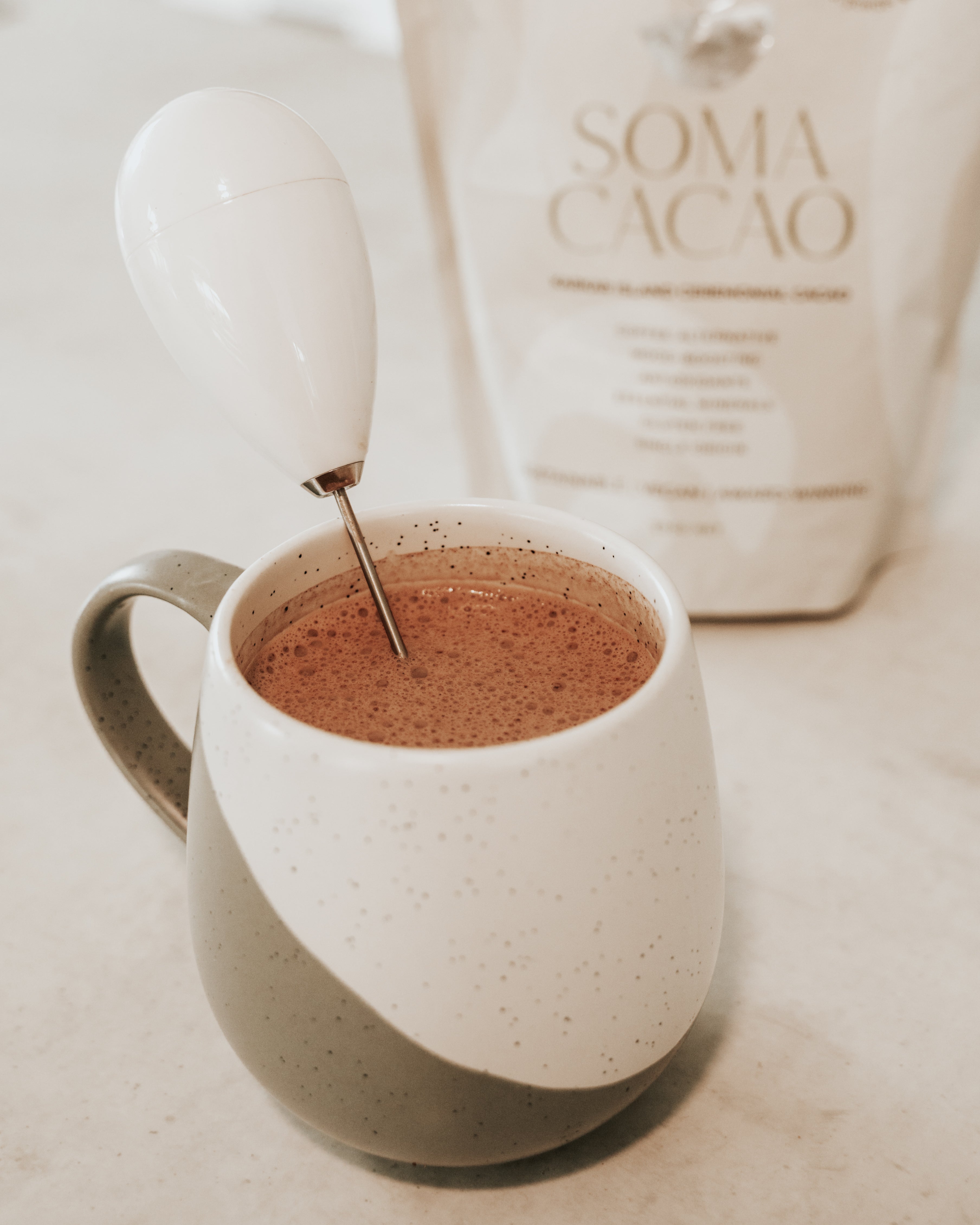
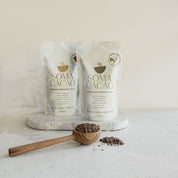
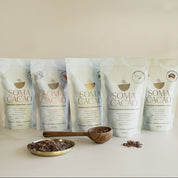
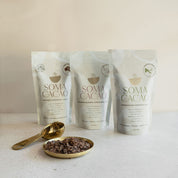
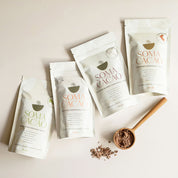
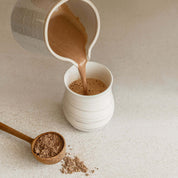
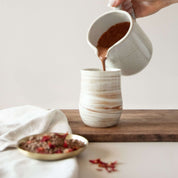
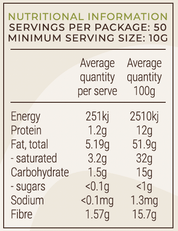
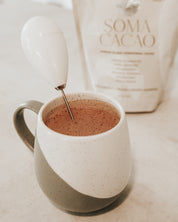
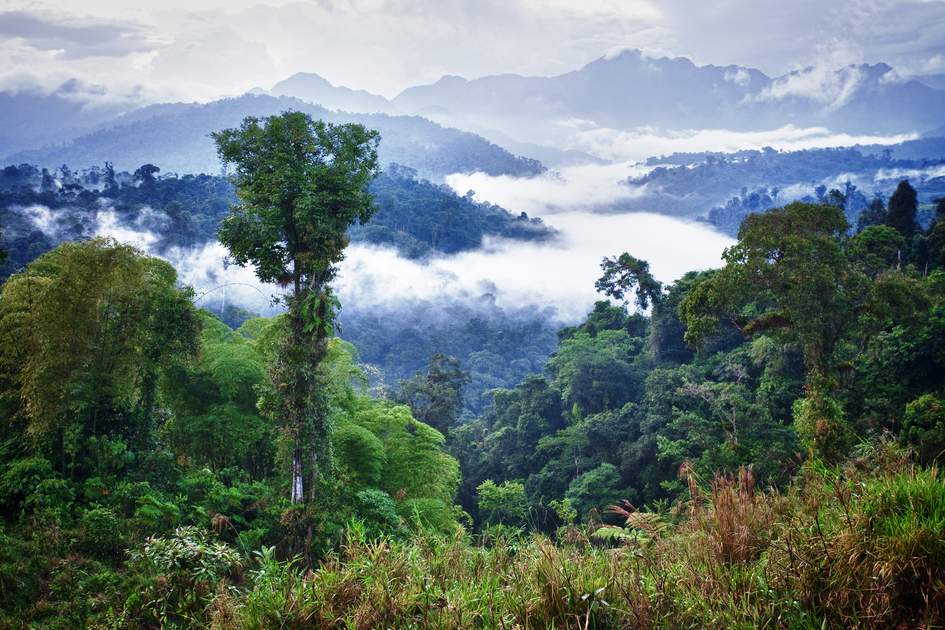
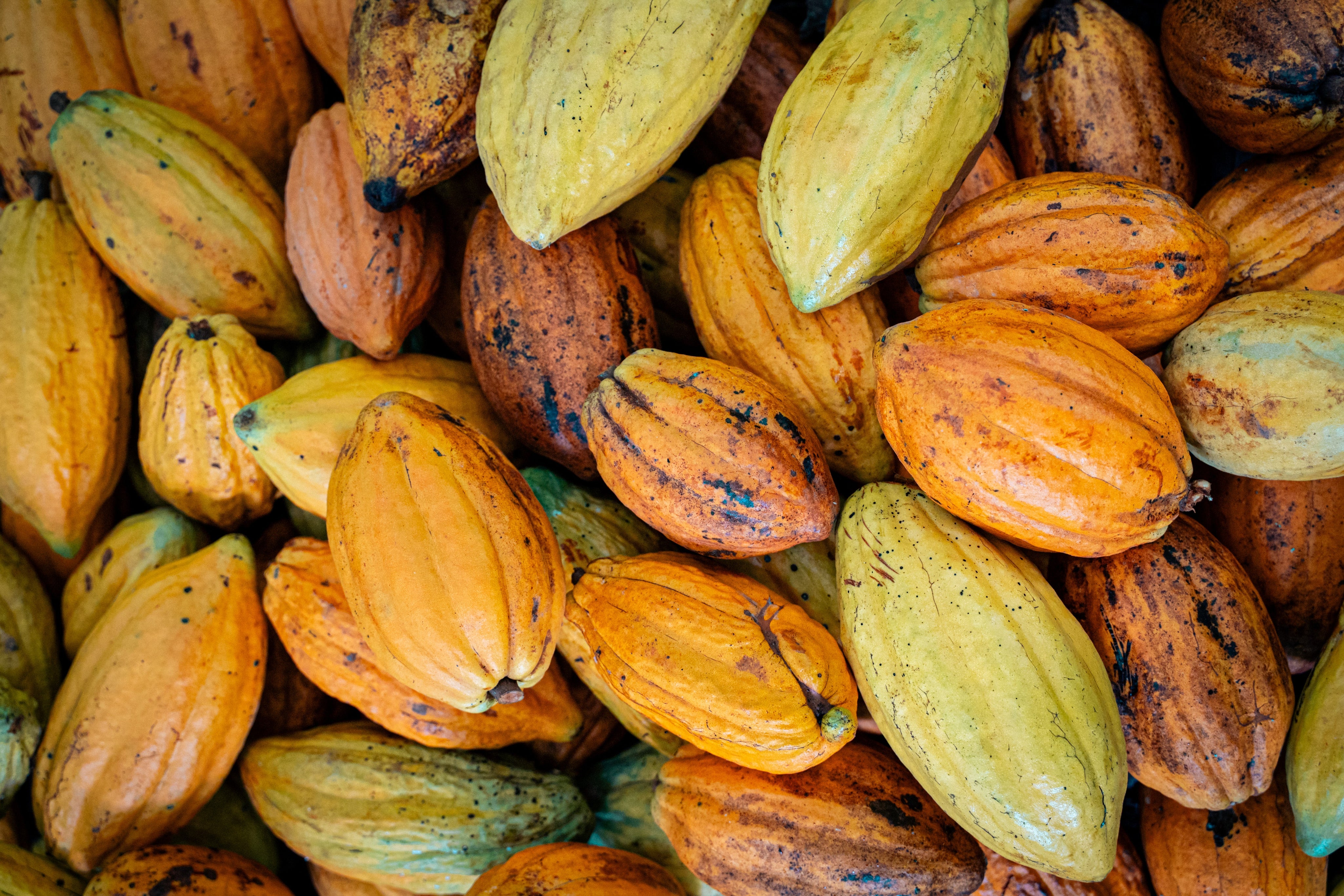
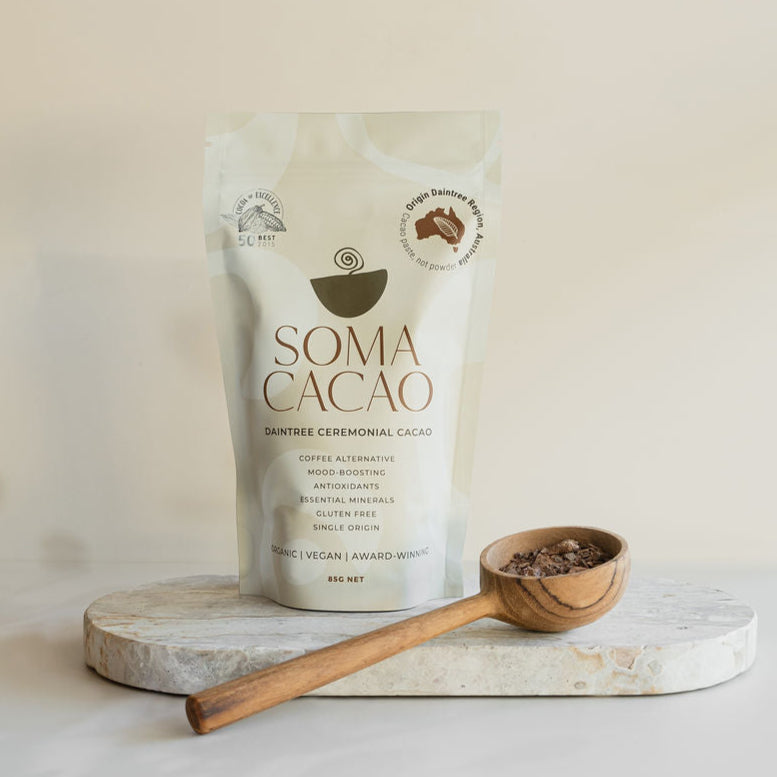
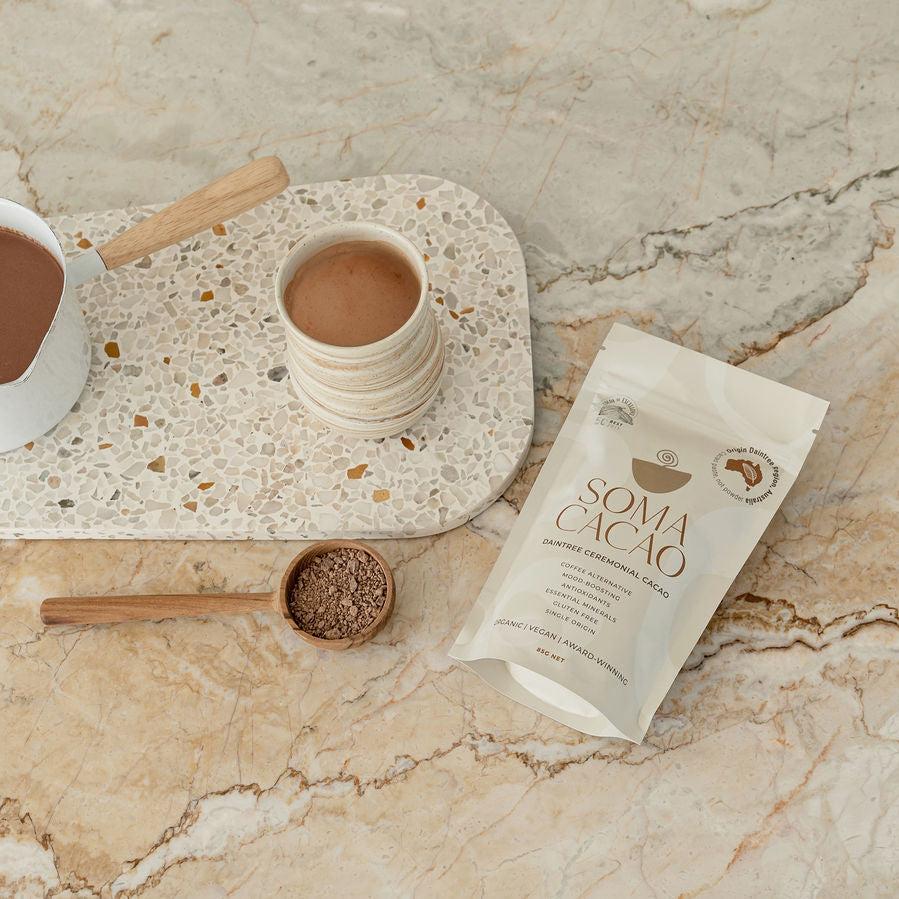
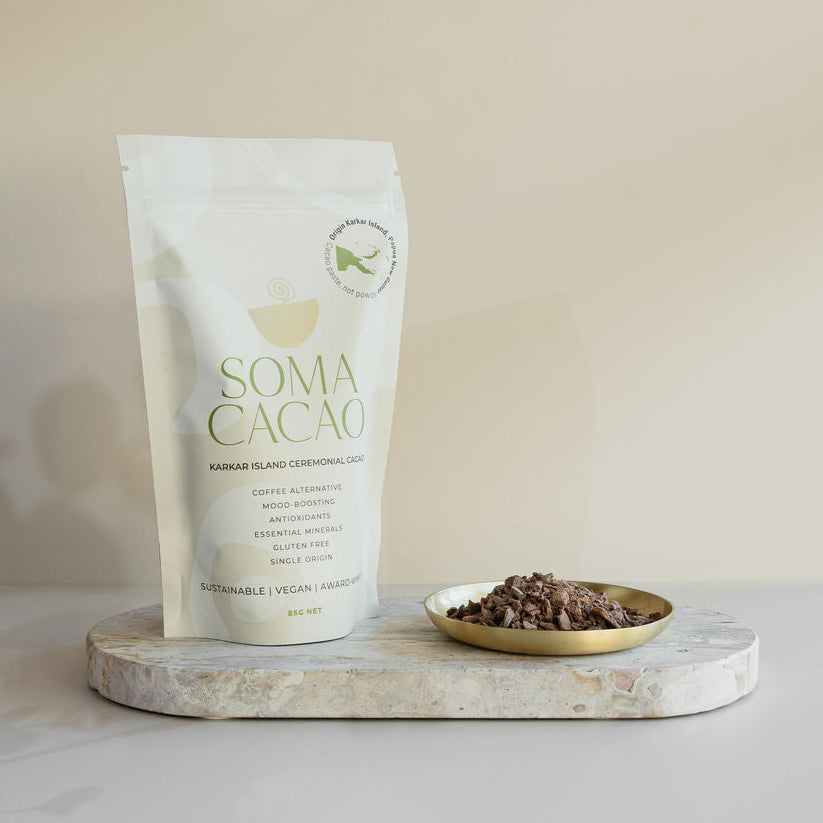
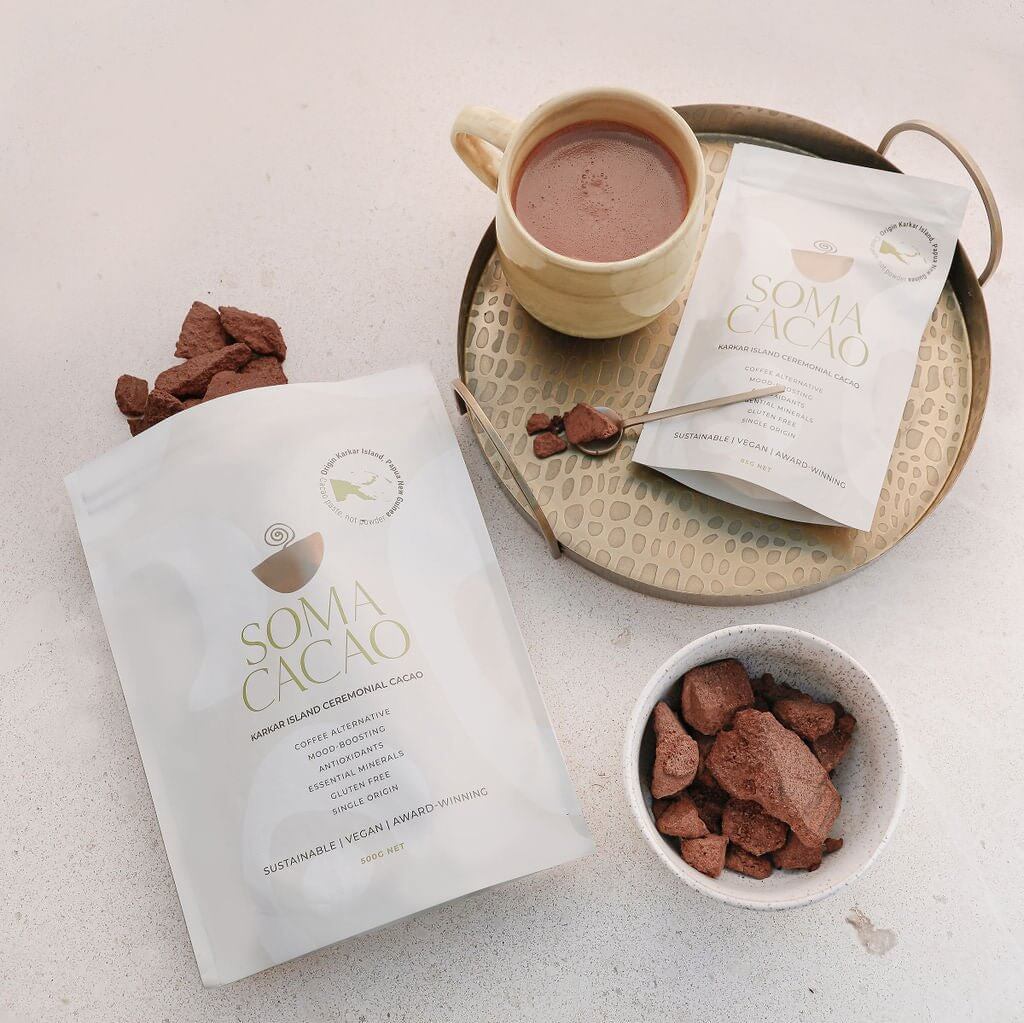
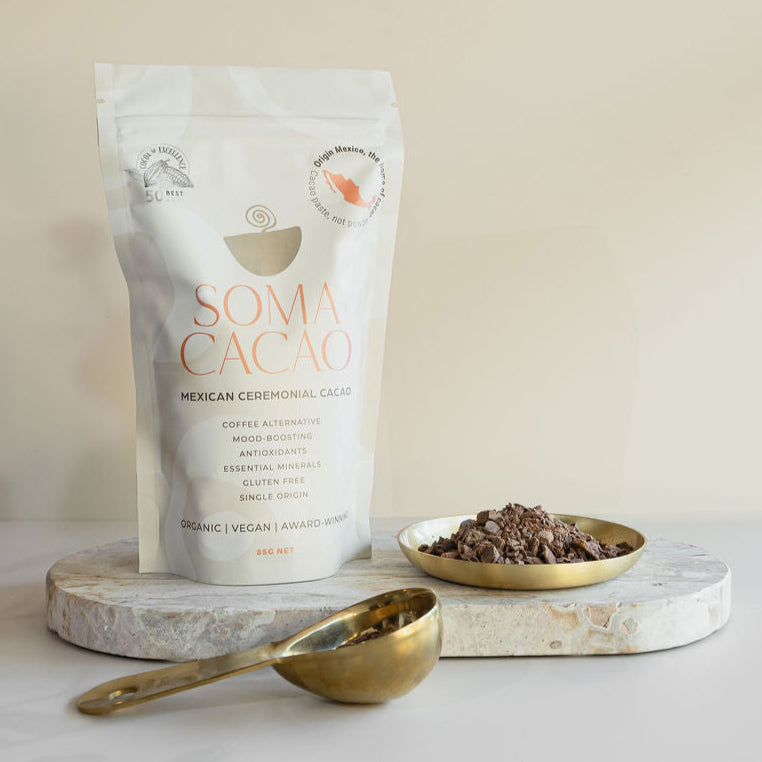
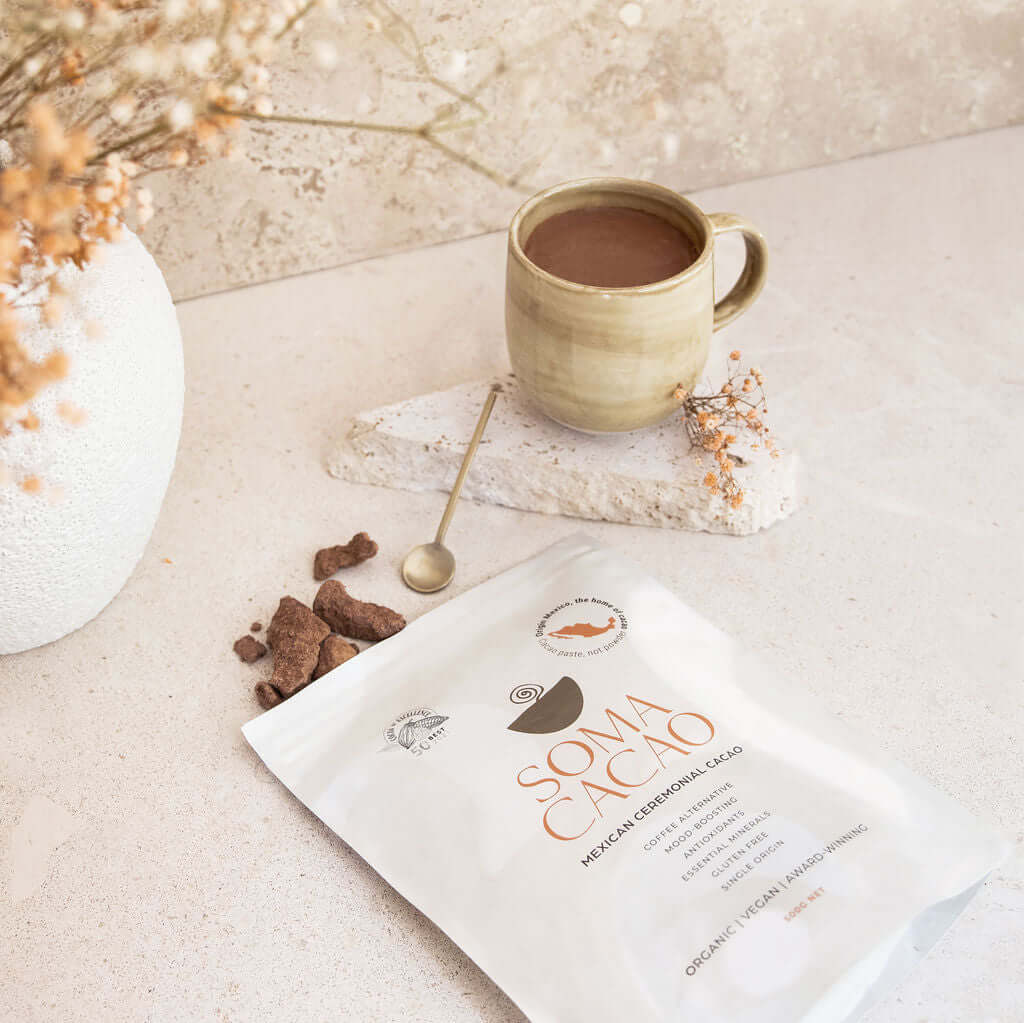
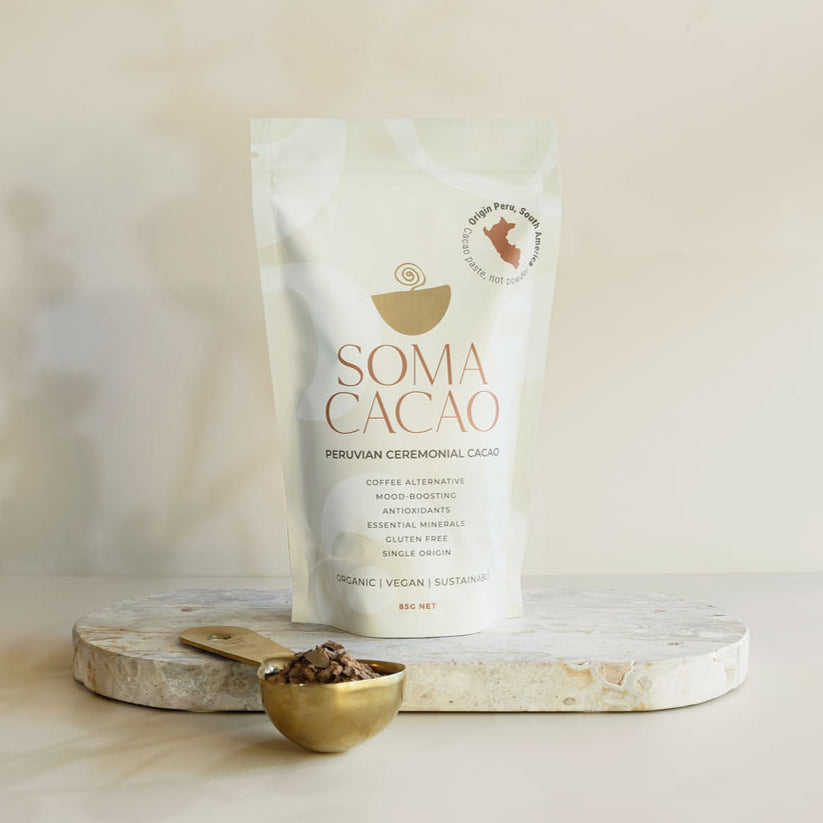
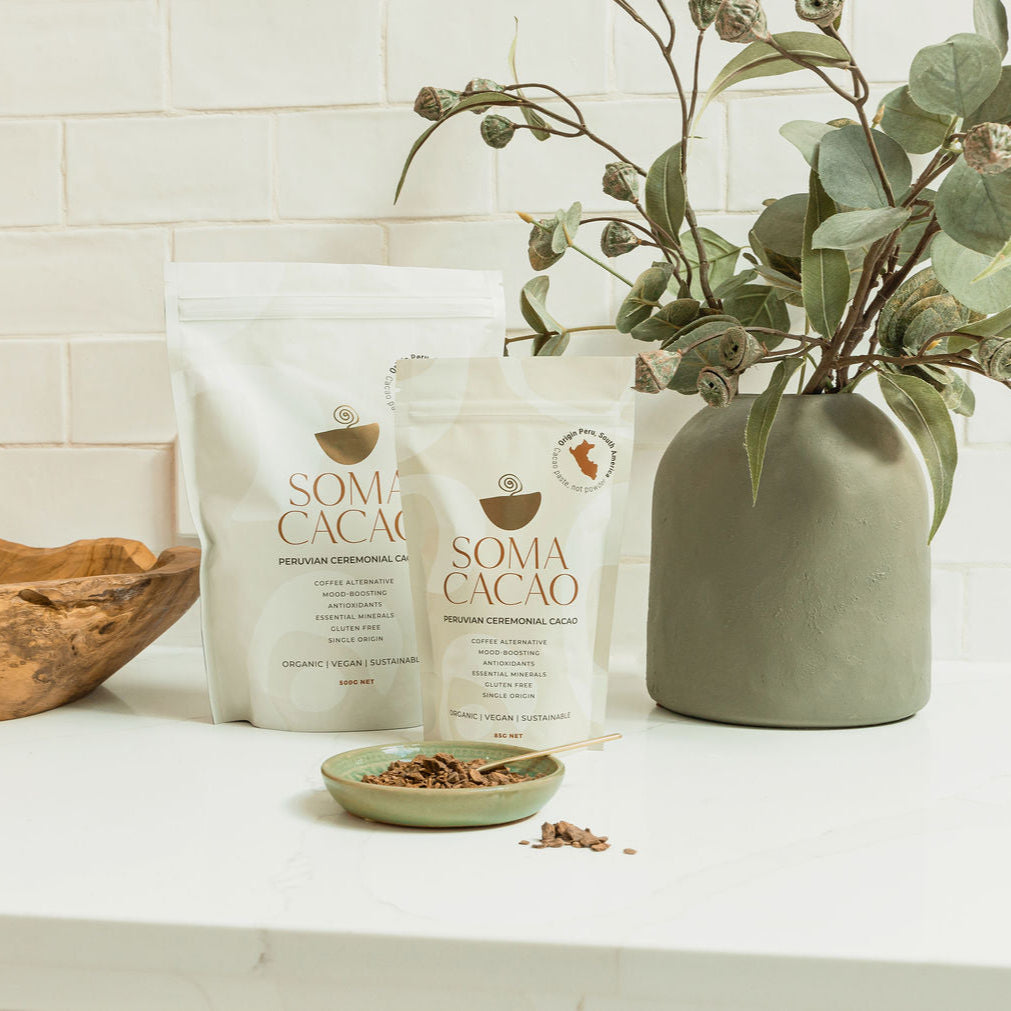
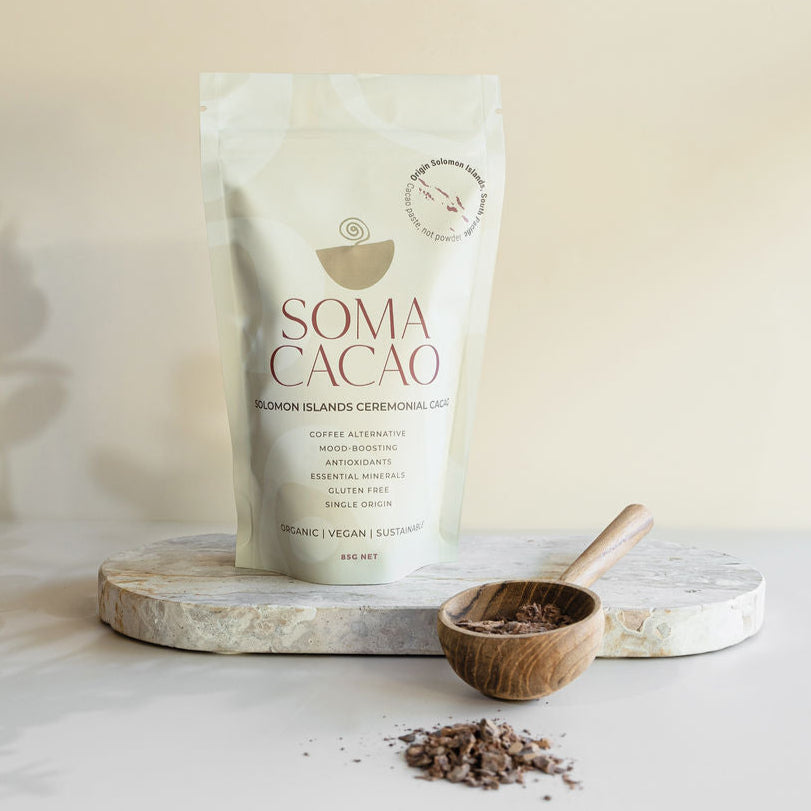
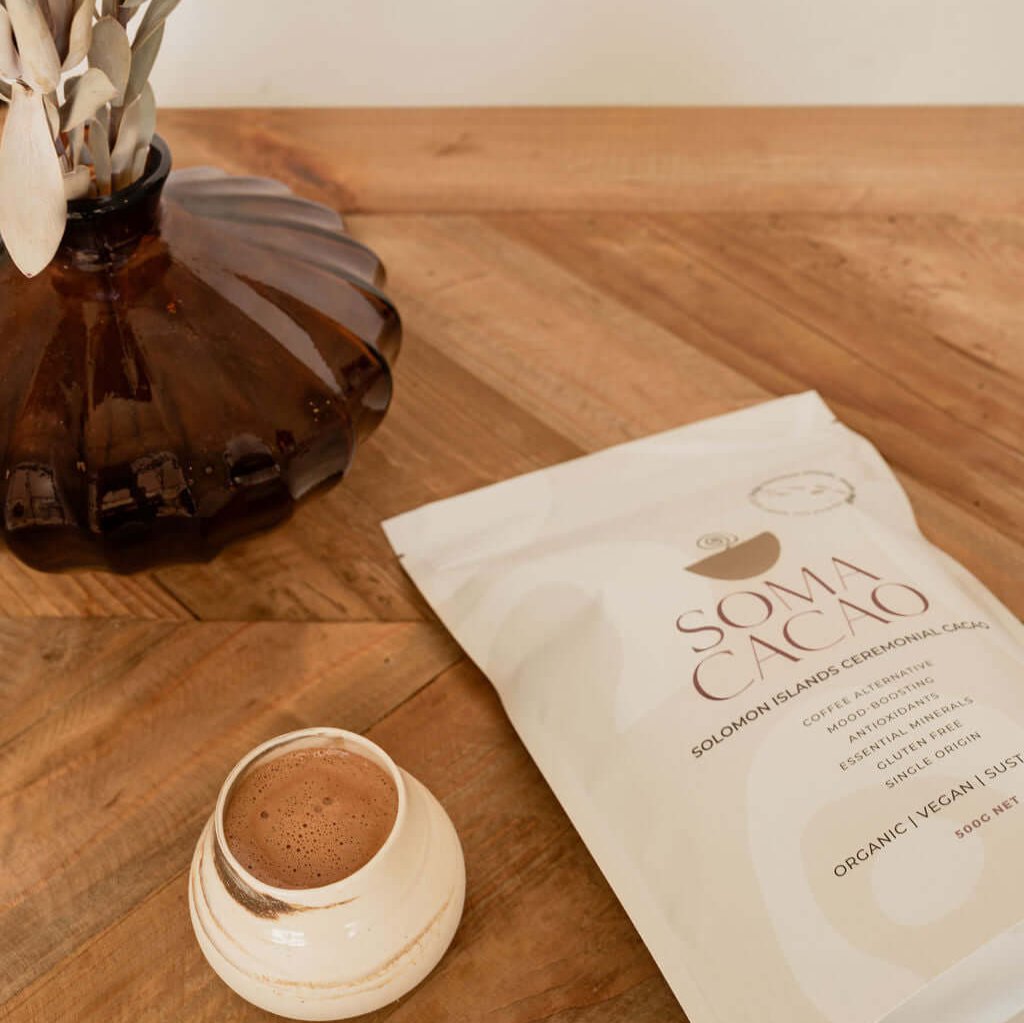
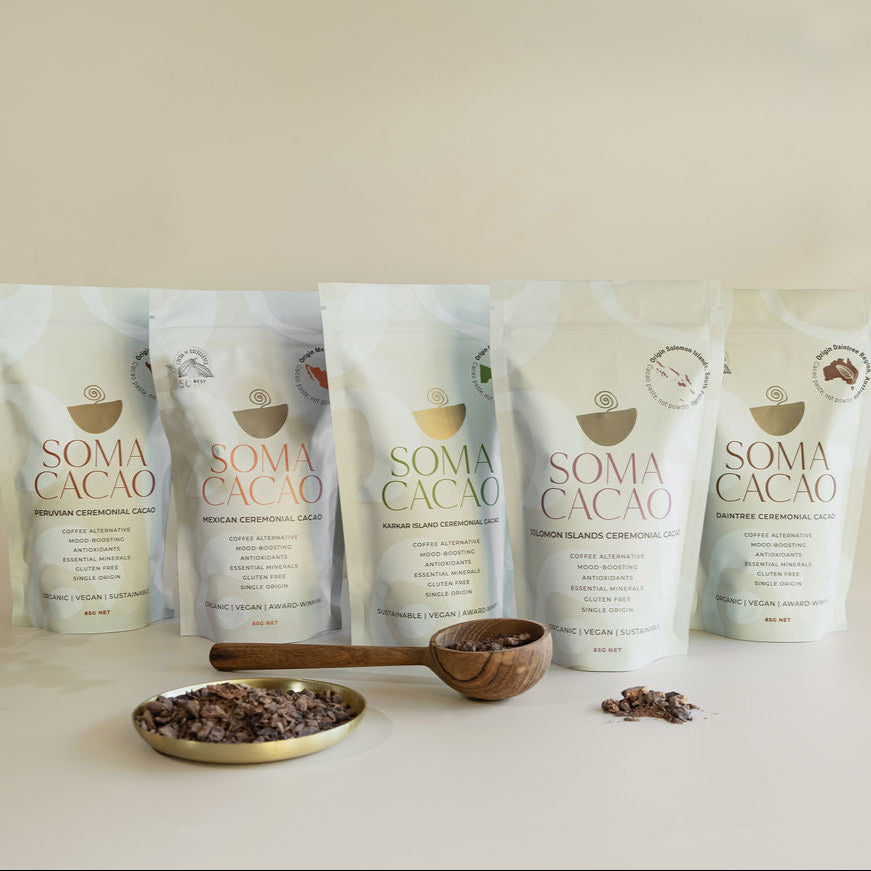
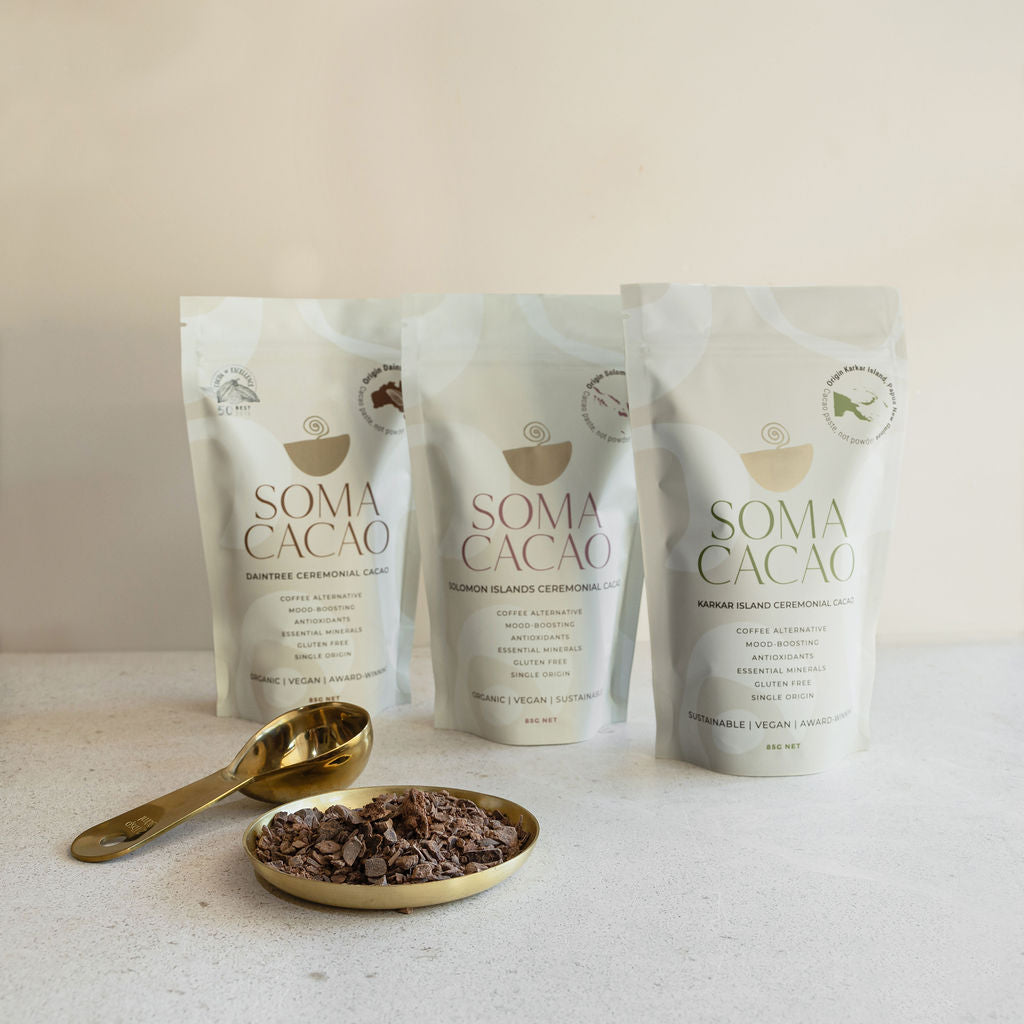
Thank for the information & comments.
So good to read your academic scrutiny.